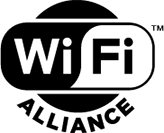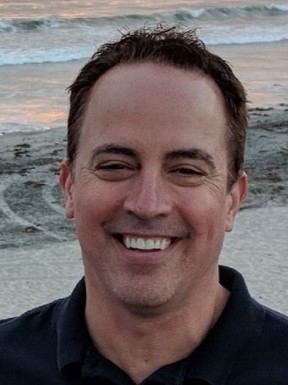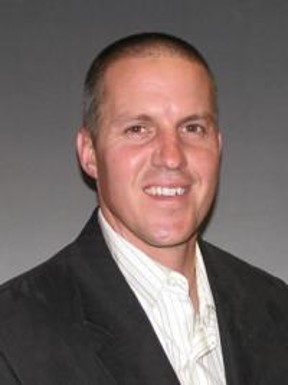The coronavirus pandemic– by its mere scale – has created new healthcare challenges around the world. As of this writing, COVID-19 cases have been reported in 185 countries. The total global confirmed case count has exceeded 3 million, and more than 200,000 individuals have lost their lives1.
The international healthcare industry has gone into overdrive, with even the most robust healthcare systems straining under the number of patients needing care. Calls for supplies to combat the spread of the virus, ranging from ventilators, personal protective equipment, and COVID-19 tests, have been heard around the world.
Despite the difficulties, the global healthcare industry is rising to the challenge. In several countries, demand has outpaced the number of hospital beds. Intensive Care Unit (ICU) beds in particular have been in short supply. As a result, many healthcare systems have had to exercise creativity in the way they accommodate the increased demand for patient care.
In February, China built an entirely new hospital for coronavirus patients. As the virus has spread to other countries, so have the efforts to increase hospital capacity. In the U.S., New York City set up a special coronavirus ward in tents on Central Park’s open green spaces, while the Moriel Convention Center in New Orleans, Louisiana has been converted into a makeshift hospital to free up beds for critically ill patients in traditional hospitals. In Europe, temporary hospitals have been erected in Italy, Spain, and the United Kingdom. Countries in Asia, including Malaysia and South Korea, have also had to provide care for patients in unexpected places.
Both traditional and improvised hospital wards rely on technology to provide high-quality care for their patients. Wi-Fi® is a crucial piece when it comes to providing connectivity for life-saving medical devices. Access Points (APs) are required to facilitate internet access at pop-up wards, allowing doctors and nurses to remotely monitor patients’ vital signs from connected medical devices. Some hospitals and clinics have also provided APs to healthcare workers so they can connect to hospital networks and systems in order work from the safety of their home. Hospital administrators, IT staff, and health technology engineers have all had to find creative ways to work remotely. Wi-Fi use has also enabled an extended use of telemedicine, allowing doctors to see patients without the need for the patient to risk exposure to infection by coming into the hospital or clinic.
Wi-Fi Alliance® members such as Cisco, GE Healthcare, and Philips have been working hard in the background to meet the needs of the global healthcare community.
Cisco
- Launched two programs focused on supporting healthcare organizations obtain networking equipment at no cost: Cisco Pandemic Equipment Brokerage and Cisco Healthcare Rapid Response Network Bundle
- Expanded free Cisco Webex offering to support work from home efforts
- Assisted and volunteered staff to set up medical-grade network for the U.K.’s National Health Service temporary hospital, NHS Nightingale
- Added resources and guidance to create temporary field hospitals to solution portfolio
GE Healthcare
- Launched a website containing all of GE Healthcare’s efforts including new patient monitoring capabilities, cleaning guidance, and educational webinars to respond to the COVID-19 pandemic
- Established partnership with Ford to build ventilators, greatly expanding production capacity
- Worked with Microsoft to quickly deploy a remote patient monitoring tool in days; offering hospitals without it free evaluations of the program until January 2021
Philips
- Doubling, tripling—or more—the production of medical devices from patient monitors to ventilators that include Wi-Fi connectivity
- Building “network in a box” solutions such that Wi-Fi connectivity for remote emergencies can be set up and used quickly
- Conducting webinars to help healthcare workers meet the challenges of care in the ICU and remote monitoring
Wi-Fi has long been turned to as a reliable means of enabling communication in disaster relief efforts, providing connectivity for first responders and helping victims share their whereabouts. The inherent strengths of Wi-Fi – it is affordable, easy to use, and can be self-deployed – make it an enabling technology in both good times and bad. The latest generation of Wi-Fi, Wi-Fi 6, in particular brings the ability to provide quality service even in crowded, congested, difficult environments such as makeshift hospitals.
Wi-Fi Alliance is working tirelessly to ensure that Wi-Fi can help everyone, everywhere stay connected during times of crisis. We applaud and sincerely thank all the healthcare workers that are on the front lines.
1Source: Johns Hopkins University
The statements and opinions by each Wi-Fi Alliance member and those providing comments are theirs alone, and do not reflect the opinions or views of Wi-Fi Alliance or any other member. Wi-Fi Alliance is not responsible for the accuracy of any of the information provided by any member in posting to or commenting on this blog. Concerns should be directed to info@wi-fi.org.



 Matt is currently a Principal Connectivity and Wireless Engineer working on integrating wireless and wired networking technologies into medical devices for GE Healthcare. He is involved with several wireless healthcare industry efforts including influencing US and foreign regulatory policy on the use of wireless in healthcare, a vice-chair position with the Wi-Fi Alliance Healthcare Marketing Task Group, a participant on the IEC/ISO 80001 Wireless Guidance Technical Report, a participant on the AAMI Wireless Strategic Task Force and a member of the ANSI C63.27 Evaluation of Wireless Coexistence standard development group.
Matt is currently a Principal Connectivity and Wireless Engineer working on integrating wireless and wired networking technologies into medical devices for GE Healthcare. He is involved with several wireless healthcare industry efforts including influencing US and foreign regulatory policy on the use of wireless in healthcare, a vice-chair position with the Wi-Fi Alliance Healthcare Marketing Task Group, a participant on the IEC/ISO 80001 Wireless Guidance Technical Report, a participant on the AAMI Wireless Strategic Task Force and a member of the ANSI C63.27 Evaluation of Wireless Coexistence standard development group. Phil leads a connectivity CoE in Philips and is a wireless connectivity industry expert with 28 years’ experience in designing, integrating, and marketing technologically advanced connectivity solutions for healthcare, home and enterprise markets. He is heavily involved in shaping the WLAN healthcare enterprise market as chair of the Wi-Fi Alliance Healthcare Task group, chair of the IEC/ISO 80001-2-3 wireless guidance for risk management in medical IT-Networks, and steering committee member for the AAMI/HIMSS/ACCE Health Technology Alliance (HTA).
Phil leads a connectivity CoE in Philips and is a wireless connectivity industry expert with 28 years’ experience in designing, integrating, and marketing technologically advanced connectivity solutions for healthcare, home and enterprise markets. He is heavily involved in shaping the WLAN healthcare enterprise market as chair of the Wi-Fi Alliance Healthcare Task group, chair of the IEC/ISO 80001-2-3 wireless guidance for risk management in medical IT-Networks, and steering committee member for the AAMI/HIMSS/ACCE Health Technology Alliance (HTA). Robert (Bob) Sayle is a Technical Solution Architect for Cisco Systems, Inc. He has been working in high-tech since the early ‘90s and has had multiple roles including system administration, programming, and network engineering. Bob now specializes in both wireless and information security for enterprise networks. He is currently a member of multiple working groups in Wi-Fi Alliance and is a member of AAMI’s Wireless Strategy Task Force and the BI&T Editorial Board. He also contributes to AAMI’s blogs as “Bob in IT” where he has been championing improving the security posture of biomedical equipment.
Robert (Bob) Sayle is a Technical Solution Architect for Cisco Systems, Inc. He has been working in high-tech since the early ‘90s and has had multiple roles including system administration, programming, and network engineering. Bob now specializes in both wireless and information security for enterprise networks. He is currently a member of multiple working groups in Wi-Fi Alliance and is a member of AAMI’s Wireless Strategy Task Force and the BI&T Editorial Board. He also contributes to AAMI’s blogs as “Bob in IT” where he has been championing improving the security posture of biomedical equipment.
Add new comment